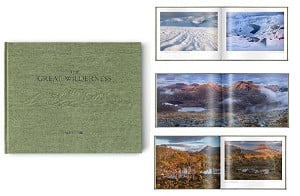
Well what a year it's been. We've all had to make do with a lot less time on the crags and hills, but in the grand scheme of things if that's the extent of your worries then you're doing well! And if lockdowns and restrictions have hit our outdoor lives, then at least many of us have had more time for reading.
In our annual Christmas books feature, staff and contributors at UKClimbing and UKHillwalking pick their favourite books published this year. As ever, it's a varied selection with something for everyone, from runners to boulderers, trad climbers to summit baggers, and including the best new guidebooks, fascinating lives and histories, epic adventures, and even a bit of outdoor politics.
Nick Livesey - Photographer, author and UKH Route Cards writer
Snowdonia Mountain Walks and Scrambles
by Mark Reeves (Rockfax)
When this book arrived last week I took it straight upstairs to my office where two large bookcases, groaning under the weight of almost 1000 mountain-themed volumes, contain a wealth of material from which I gather a great deal of pleasure.
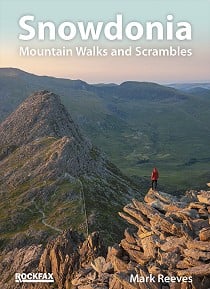
This new Rockfax guide by Mark Reeves covers walks, scrambles and easy climbs throughout Snowdonia National Park (with the inexplicable omission of the Tarren Hills) and is one I might like to have written myself were I not beaten to it! An initial flick through had me recalling my first encounter with 'Western Grit' which, at the time, I regarded as sheer, unadulterated porn.
There will be few of you not familiar with the revolutionary production values of the Rockfax back catalogue and they continue in Snowdonia - Mountain Walks and Scrambles, a book I really don't need - I've ticked all but two of the routes - but a very welcome addition to my library nonetheless.
The imagery is excellent throughout, utilising the talents of several local photographers, and Mark's passion for and knowledge of the area shines through on every page.
Back in the days when I was a weekend warrior who thrived on walking, scrambling and low grade rock and winter climbing this would have been my bible; it is inspiring, educational and aesthetically beautiful. I can see myself dipping in and out of it for many years to come.
- Watch this space early next year for Nick's full review.
Dan Bailey - UKH Editor and Gear Editor
The Book of Trespass
by Nick Hayes (Bloomsbury)
With working examples of a right to roam to be found on the nation's doorstep, why is public access in England still so straitjacketed?
By law the public, the landless majority, are excluded from 92% of the land and 97% of its waterways, their passage dictated by narrow rights of way, and hemmed in by fences and walls that serve as barriers in the mind as much as on the ground. An exploration of the contested terrain where freedom and private property overlap, this brilliant and passionate book tests the strange concept of trespass to destruction, and builds a powerful case for reform. Author and illustrator Nick Hayes puts his money where his mouth is, documenting a series of trespasses through estates, woods and private parkland, clandestine missions he makes a point of carrying out in accordance with the Scottish Outdoor Access Code - just to prove that the simple act of wandering the countryside does no harm in and of itself.
Wearing his learning lightly, and seeking to persuade rather than cajole, Nick Hayes unearths the iniquitous history of England's land in order to point to a better future. More poetic than polemical, and scattered with the author's own beautiful illustrations, this is a book about an idea whose time has come.
- We interviewed Nick Hayes about the book and the Right to Roam campaign:
Irish Peaks
Whether you've never been hillwalking in Ireland (sympathies), or it's your back yard, you should be able to find plenty of inspiration - and more than a little information - in Irish Peaks.
Part guidebook to its 100 highest hills, part celebration of the stunning and diverse mountainscapes found across the island of Ireland from north to south, this large format hardback book was produced thanks to the contributions of many individual Mountaineering Ireland members, bringing valuable local depth to its geographical breadth. Route descriptions are thorough, and the hundreds of landscape and action photos include some real crackers to whet your appetite for the real thing. Based on an original work by the late Joss Lynam, arguably the father figure of Irish mountaineering, this authoritative and attractive guide will be enough to get any keen hillwalker busy planning a post-Covid trip over the Irish Sea.
- Read our full review here:
The Munros in Winter
by Martin Moran (Sandstone Press)
Back in 1984-5, Martin Moran became the first person to climb all the Munros (then 277) over a single winter season. An odyssey of 83 days, this was an audacious feat, and arguably ahead of its time; only two others have yet followed in his footsteps - Steve Perry in 2005/6, and Kevin Woods in 2019/20 - the reason obviously being that battling up that many hills back-to-back in the dark, storm and cold of winter is a phenomenally gruelling task to take on, requiring an unusual fitness and drive. Martin was of course blessed with both, along with plenty of climbing talent. I only climbed with him once - some other readers will have known him far better - and his open, understated character gave few hints to his impressive record of new routes and hard repeats on the Scottish winter mountains and further afield. But of all those achievements I still rate his winter Munro round high.
Told in vivid, engaging language, but without bombast, this book is infused with the passion and the beauty of the Scottish hills in winter, and a deep respect for their elemental force. The narrative puts you right in the action, and serves as a down-to-earth antidote to the self consciously literary efforts of much modern outdoor writing. At his best Moran can certainly wield a pen as handily as an axe (and it probably was a pen, back in the day).
If you didn't read this classic hill book at the time then I urge you to do so now. It's impossible to sit through The Munros in Winter without feeling inspired to go out and climb some. But all of them, in one giant journey...? I think I'd rather read about it than do it. Of course he couldn't have pulled it off without his wife Joy, working behind the scenes as one-woman support team, logistics manager, driver and media contact. In this re-release of Martin's classic account, Joy has added a poignant foreword. "It is not always easy to share your partner with another love" she writes "In my case I was up against the mountains." Martin Moran died in an avalanche in the Himalayas in 2019.
Wanderers - A History of Women Walking
by Kerri Andrews (Reaktion Books)

From William Wordsworth to Alfred Wainwright, why is it that the most famous names in the record of walking for pleasure are overwhelmingly male? Women have just the same urge to stride free, to experience nature, to test themselves and to find out what's over the next hill. But as so often in history, its female movers and shakers have been largely overlooked by the men that wrote the accounts. Even in the days when nice girls had to behave, plenty of them, it's clear, were out doing things as unladylike as hiking up hills. Some of them even managed to write about it - and it's these often-overlooked accounts that form the subject of Wanderers.
So we have Elizabeth Carter roving alone through the Kentish countryside of the 1700s ; Ellen Weeton in the 1800s climbing Snowdon solo (to genuine male horror); and Harriet Martineau, an intellectual powerhouse of the Victorian era, for whom hard long-distance walking was an essential part of life. While William Wordsworth was a famous pedestrian, it's less well known that his sister Dorothy also felt driven to walk the hills and dales of her beloved Lakeland. I hadn't heard of some of its subjects, and feel a lot better informed for having met them now, out on the road. In giving voice to female walker-writers, Wanderers fills out some big blanks in the history of walking, from an 18th Century pioneer to walkers of the present day.
As well as being a Senior Lecturer in English Literature at Edge Hill University, author Kerri Andrews is a keen hillwalker - and one of the nice things about this book is the way it combines her own walking narrative with biography and literary scholarship. In Andrews' sensitive portrayals there's a sense of identification with her subjects. This may be as close as you'll get to the inside of Nan Shepherd's head - and that seems like an interesting place to be.
- We will publish an interview with Kerri Andrews about this book early in 2021.
Skye's Cuillin Ridge Traverse
by Adrian Trendall (Cicerone)
Produced to general acclaim by Skye-based guide Adrian Trendall, this fantastic guidebook really sells the Cuillin, covering the notoriously complex ground of the Traverse to a new level of detail and clarity.
All the essentials you'd hope for in a Cuillin guide are done well here - a meaty intro with advice on everything from gear to traverse logistics; snappy route descriptions backed up with numerous photo topos and clear Harvey map extracts; and many inspiring action and landscape photos. In addition to the full traverse and variations, several supplementary routes are also described, and though you could consider them reccys or warm-ups for the main event, they are far more than that: days out the calibre of Pinnacle Ridge and the Dubh Ridge are as worthwhile in their own right as the full Traverse.
Buy this book and you get two small volumes in the one plastic cover. In the interest of saving weight when it counts, all the extras are contained in volume one, while the Topo Booklet sensibly gives you just the essential the blow-by-blow stuff on the Traverse itself. Overall, this is a welcome addition to Skye coverage.
- Our full review can be read here:
Natalie Berry - UKC Editor-in-Chief
The Moth and the Mountain
by Ed Caesar (Penguin Viking)
One of the most talked-about mountaineering and adventure books of the year, The Moth and the Mountain is a fascinating account of one of mountaineering's lesser-known mavericks: Maurice Wilson, the novice aviator and bumbly-at-best mountaineer who wanted to fly from England to Everest and tackle its unclimbed slopes.
A World War I Captain and recipient of the Military Cross 'owing to his pluck' and devotion to duty in 1918, Wilson's desire to climb Everest is 'forged in private trauma', Caesar writes. Abandoned by the state and feeling purposeless in peacetime like many of his peers, Wilson is inspired by newspaper reports of Everest expeditions and sets his sights on scaling the world's highest peak, alone, aiming for both the summit and spiritual rebirth. His scant mountaineering preparation consists of a few training rambles in the lowly British hills, and he packs neither crampons nor an ice axe in his de Havilland Gipsy Moth aircraft before setting off on the flight and climb of a lifetime.
Caesar's empathetic portrayal of Wilson - who has long been laughed at or dismissed as an oddball - is the result of years of meticulous research tracing Wilson's contrails and footsteps, becoming 'less like an intimate than a detective in approaching him,' as he writes. They don't make adventurers like Maurice Wilson anymore, and The Moth and The Mountain is a fitting tribute to a truly remarkable man who defied all odds and whose flight of fancy very nearly came to full fruition. The book has received rave reviews in newspapers including The Guardian, The Times, and The Wall Street Journal amongst others. A must for this year's Christmas book list, for climbers, aviators and everyone in between.
CLICK HERE to watch Ed Douglas interview Ed Caesar about The Moth and the Mountain at this year's Kendal Mountain Literature Festival.
To Live
by Élisabeth Revol (translated by Natalie Berry) (Vertebrate Publishing)
A biased choice, maybe, but the story was so compelling that I sometimes had to force myself to stop translating and take a break – I just wanted to turn the page even though I knew the tragic outcome.
To Live is the English translation of French mountaineer Élisabeth Revol's book Vivre. Élisabeth's story gripped the world in January 2018 shortly after she had made the first female winter ascent of Nanga Parbat, the "Killer Mountain", on her fourth attempt at the peak. Sadly, the attention was not for her climbing achievement, but for her attempt to bring her climbing partner and close friend Tomasz 'Tomek' Mackiewicz to safety and her own dramatic rescue after Tomasz displayed symptoms of snow blindness on the summit. "Éli, what's happening with my eyes? I can't see your head torch any more; you're a blur!" It was a moment that lasted 'an eternity', Élisabeth writes, marking the start of a harrowing descent over three nights in sub-zero temperatures at high altitude.
Against her will, Élisabeth was forced to leave Tomasz behind at 7,283m and descend to save herself. Upon her return to France, there was another obstacle to surmount: Élisabeth was hounded by reporters and photographers in hospital as she recovered from severe frostbite and fatigue. Accused of being selfish, incompetent and negligent in the press and in forums for 'abandoning' Tomasz and saving herself, Élisabeth's survivor's guilt was further fuelled by the media frenzy of lies, misquotations and insults.
In To Live, she attempts to lay out the harsh truths of what happened on the ascent and descent: 'I owed it to Tomek,' she explains. Alongside the terrifying account of their climb, Élisabeth examines the roots of her "addiction" to mountains and mountaineering, her close friendship with Tomasz and his Nanga 'obsession', and describes her slow road to recovery following the epic rescue. It's clear that writing the book has been a form of therapy - a means of 'closing the loop', as she describes it - in helping her to come to terms with what happened on the Killer Mountain. First-person accounts of Himalayan ascents by women are few and far between, and To Live is a worthy addition to any mountain literature collection.
Rob Greenwood - UKC/UKC
Slatehead
by Peter Goulding (New Welsh)
Maybe I'm a little biased in including this, because I had both the pleasure and privilege of speaking to its author - Peter Goulding - about it at this year's Kendal Mountain Festival.
That said, it's been the best part of 20 years since I last got psyched for the slate, and I wasn't sure it'd be for me as a result of this. But I'm glad I read this book, as it has not only re-kindled the fires as far as psyche is concerned, but it's also given me a greater knowledge and appreciation for the area itself.
Slatehead is both down to earth and relatable, not least because its main protagonist isn't breaking any records or pushing the boundaries of modern rock climbing: they're just a climber, who's keen, wants to get better, but has - like a great many of us - life to juggle around this. Simultaneous to this he tells the story of the quarries themselves, including both the quarrymen, the climbers, the routes and the culture that's existed and evolved in the local area.
Due to its human aspects I'd say there's something for everyone in Slatehead, irrespective of whether or not you actually like the slate. That said, by the end I'll be impressed if you're not just a little intrigued by this unique landscape, rock type and climbing style.
Traceless
by Heather Dawe and Geoff Cox (Little Peak Press)
Heather Dawe's writing has always interested me*, with her focus frequently resting upon on matters of approach, attitude, appreciation, perspective and philosophy. However, what makes Traceless so special is its collaborative nature, and the way that it spans poetry and prose, fact and fiction, cartography and creativity. It is, as a result of these factors, a truly unique fell running book.
Traceless was inspired by the relatively esoteric and unknown Gerry Charnley Round in the Lake District (confessional: I hadn't heard of it before reading the book, but that didn't matter in the slightest). It differs from the significantly better known Bob Graham not just in terms of the number of people who have completed it, but also in its ethos. Rather than following a distinct set of paths between peaks, the Gerry Charnley Round's checkpoints are far more obscure - hence require a high degree of ingenuity as far as mapwork is concerned in order to plot your course between them.
In an age of smartphones and GPS watches, Traceless encourages us to take a moment and strip life back to its simplest form and enjoy the moment.
* so much so that this is the second year running that I've included one of her books, with High Inspiration featuring on last year's Christmas book list
The Great Sea Cliffs of Scotland
by Guy Robertson (Scottish Mountaineering Press)
It's hard to go wrong with a book filled to the brim with awe inspiring images of sunny Scottish sea cliffs, because - at least personally speaking - there's nowhere better.
The Great Sea Cliffs of Scotland, which has been compiled by Guy Robertson, explores this vast and varied expanse. Just reading the stories alone feels like an adventure, taking you from Caithness and Sutherland on the Scottish mainland, all the way through to the archipelagos of the Inner and Outer Hebrides, the Orkney Islands and Shetland. It's a fantastic journey to make in one's mind, especially with the year we've had, where it hasn't always been possible for most of us to reach these places. This book will almost undoubtedly inspire a lifetime of future trips, including as it does a blend of some of the more familiar cliffs alongside some of the more esoteric, although no less deserving, ones.
- If you still need convincing check out the full review here:
Boulder Britain
by Niall Grimes (Ape Index)
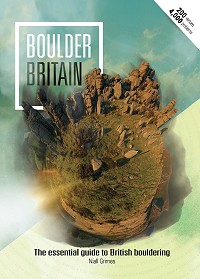
Perhaps randomness is one of Boulder Britain's greatest assets, and that's something that's further expanded upon in its second edition. Not only does it contain the classics, but it also celebrates some of the lesser loved areas, and does so across the length and breadth of the country. As a result, it doesn't matter whether it's a jewel of the mountains, a coastal gem, a turd in the woods, a used condom or hypodermic needle within an urban sprawl, or a man-made bridge in Leicestershire - Boulder Britain celebrates it all.
Niall Grimes (aka Grimer) has a unique way with words too, capturing the heart and soul of each place, be that good, bad, ugly or really ugly. The photography featured within is fantastic, plus there's plenty of it. Given that there are several crags herein which have never had topos published in print, Boulder Britain really does offer something unique by shining a light on some hitherto dark corners. This is another hugely motivating aspect of the guide - you're never going to get bored reading it, ogling its pictures, or going to check out the many places it describes.
Keri Wallace - Girls on Hills and UKH contributor
Broken
by Ally Beaven (Vertebrate)
You might expect an anthology of ultrarunning struggles to be a bit dry, but Broken is an understated and (seemingly) effortless stroke of genius. The book captures an historic moment in the development of our sport and our nation, but somehow manages to feel like 'a chat with Ally'.
With dry humour, the author weaves together not just tales of pain and suffering, but stories of selflessness, integrity and community that make you feel like you were there handing out gels. Beaven's literary style perfectly captures the stoic modesty of the fell running community and is peppered with clever quips and insightful observations, which endear you to all the usual suspects.
The accounts of longer challenges such as LEJOG and the Munro Round are split over two chapters, mimicking the armchair dot-watcher's horror; 'oh I almost forgot, they're still going!', of days and nights later.
As a self-professed running addict, I have vicariously fed off the frenzied excitement and chaotic support scenes recreated in these pages, and found the insights into such feats of human endurance really inspiring. As more people read this book, surely even more records are going to be broken.

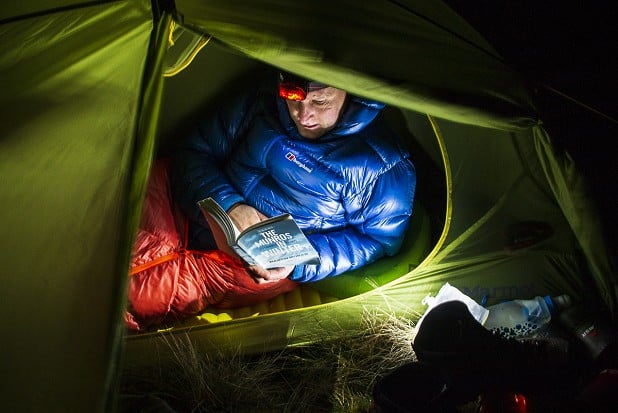

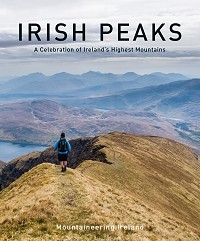

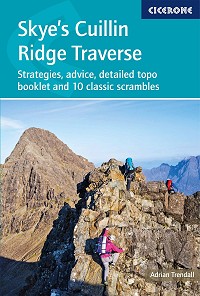
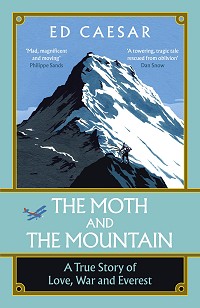
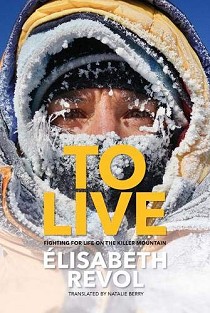

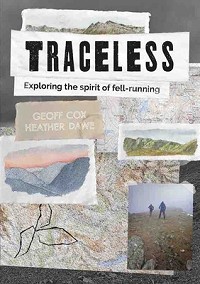
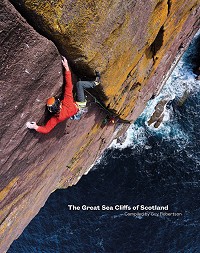
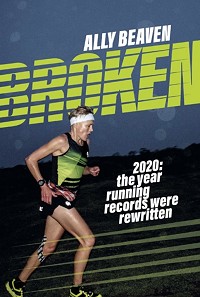
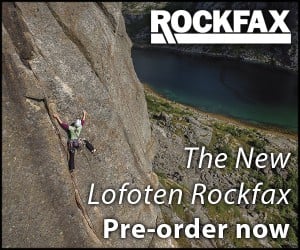
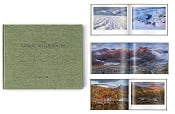
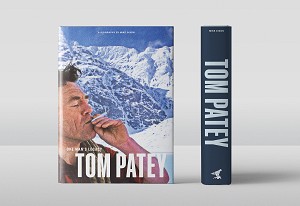
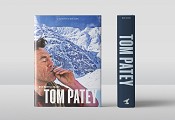

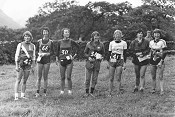

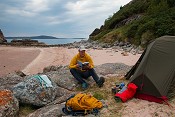
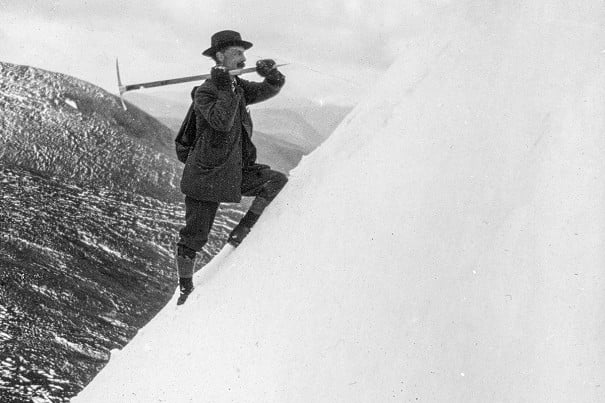



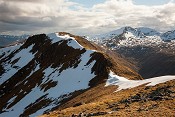

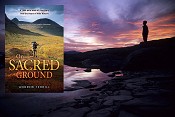
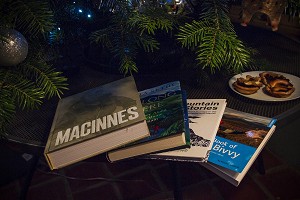
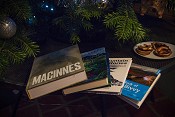

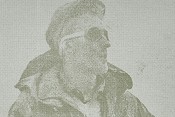
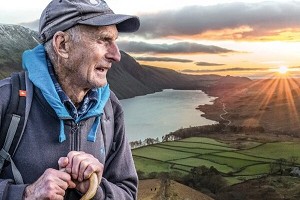

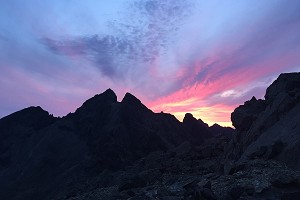
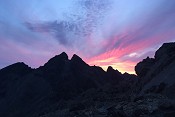
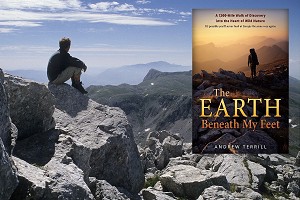
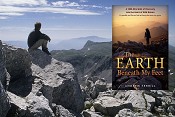
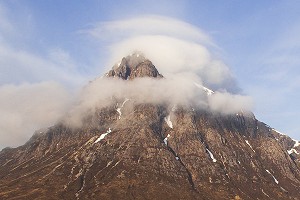
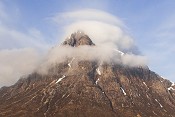
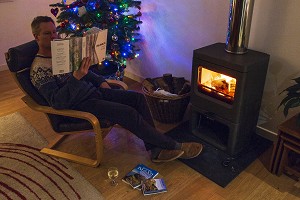
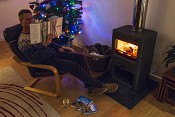
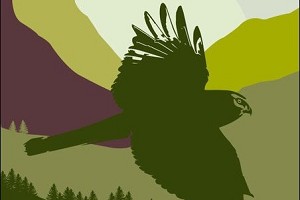
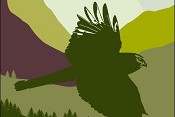
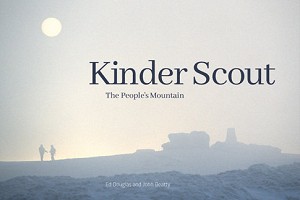
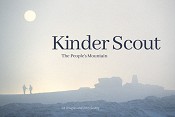
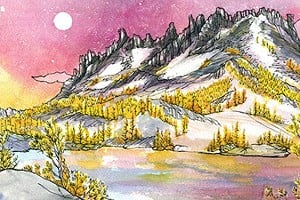
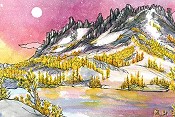
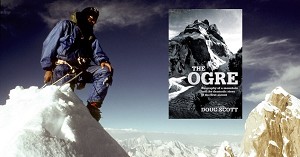

Comments